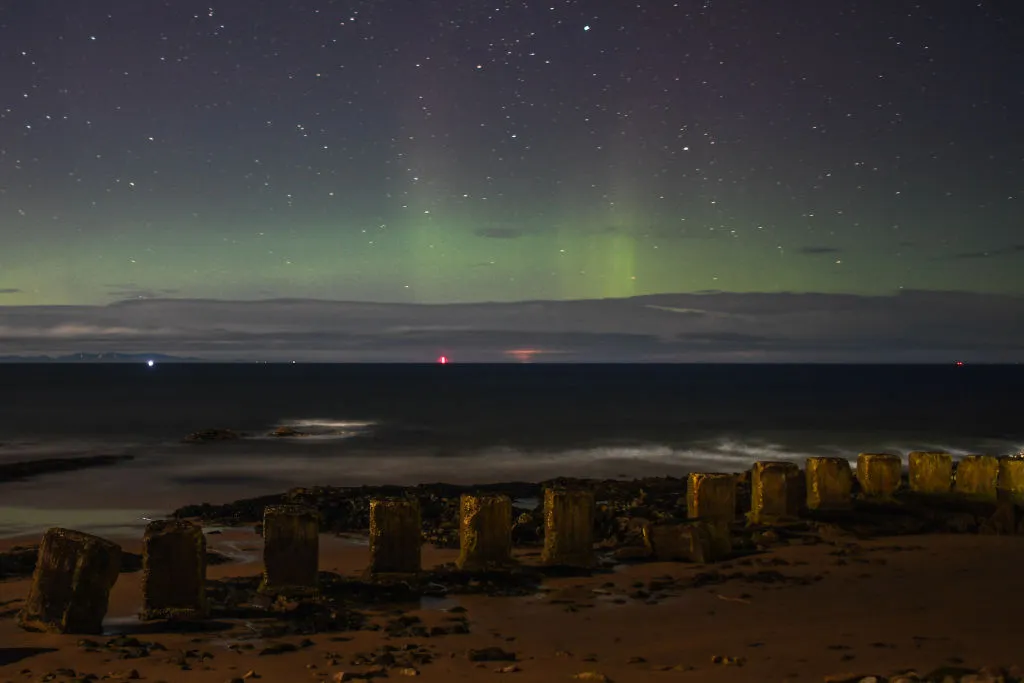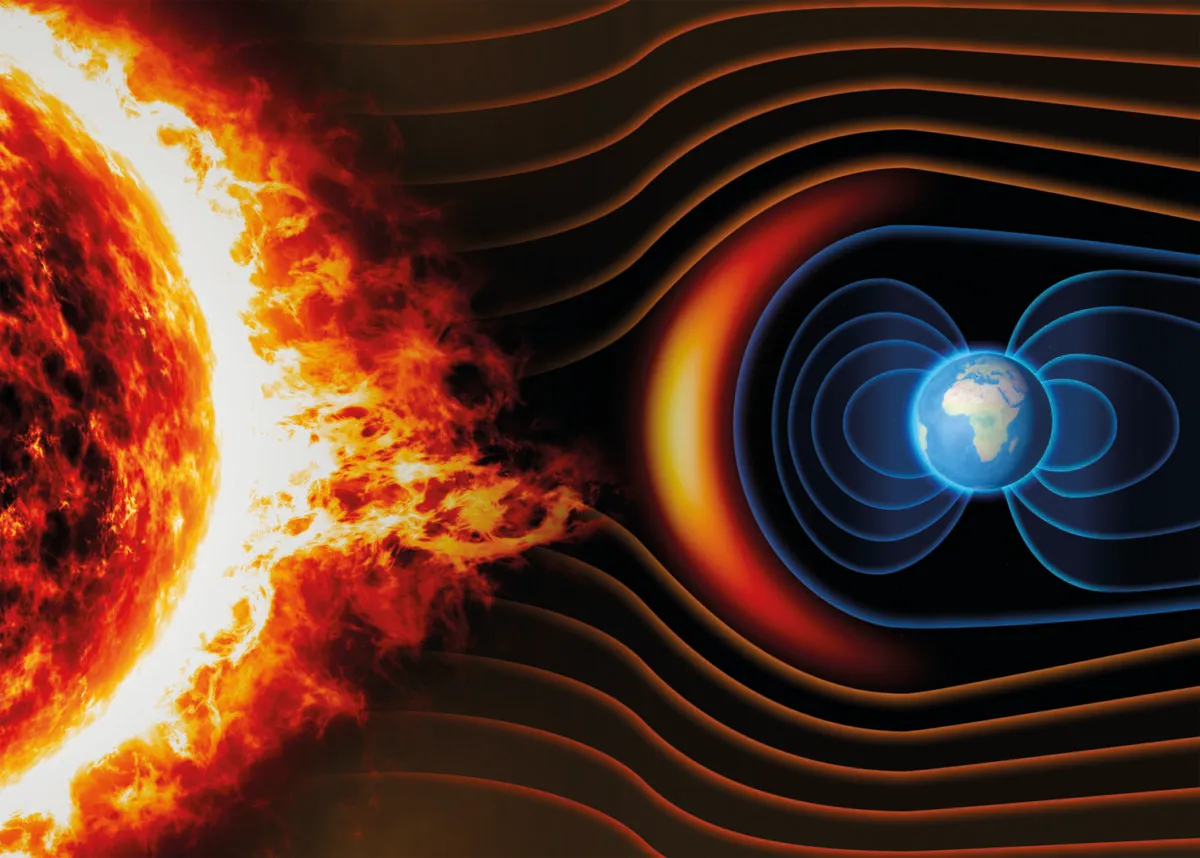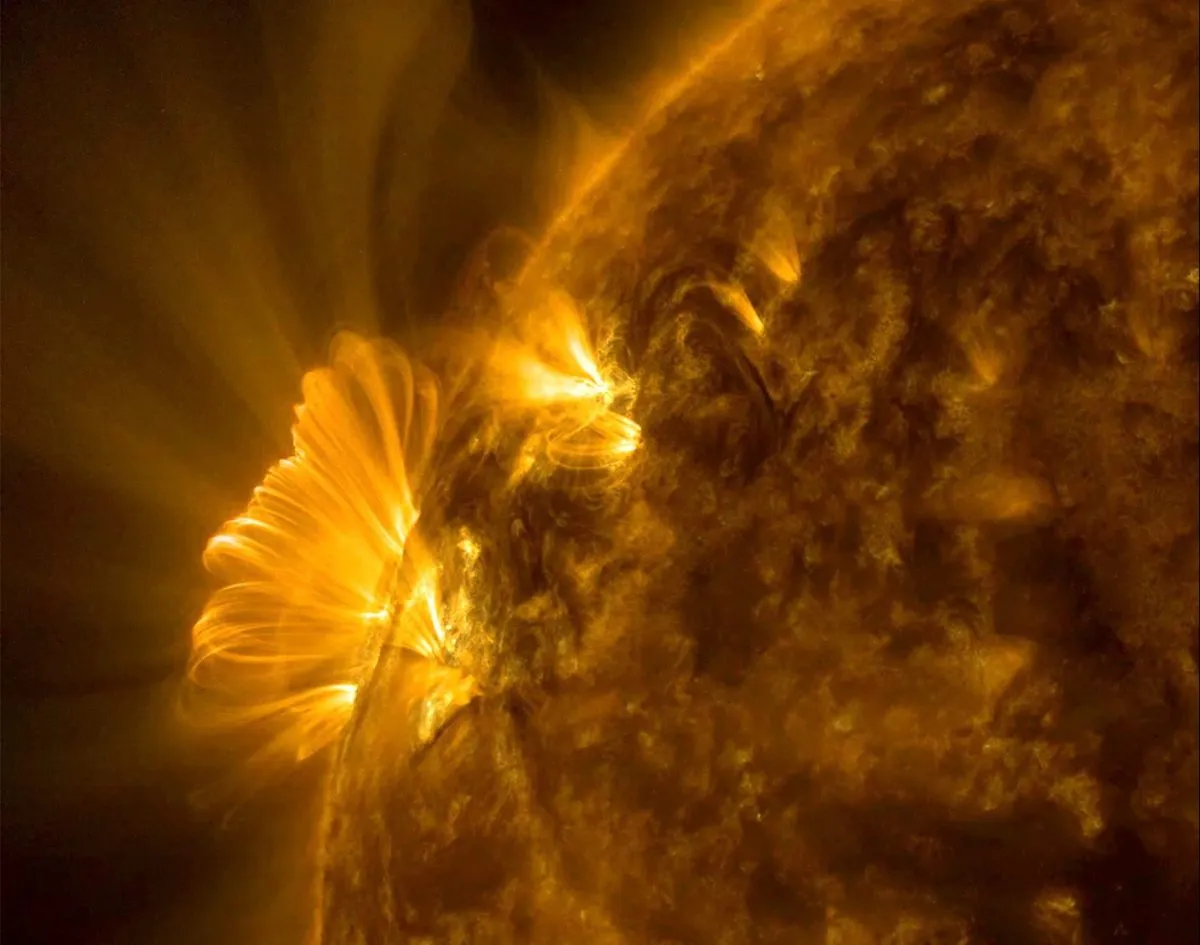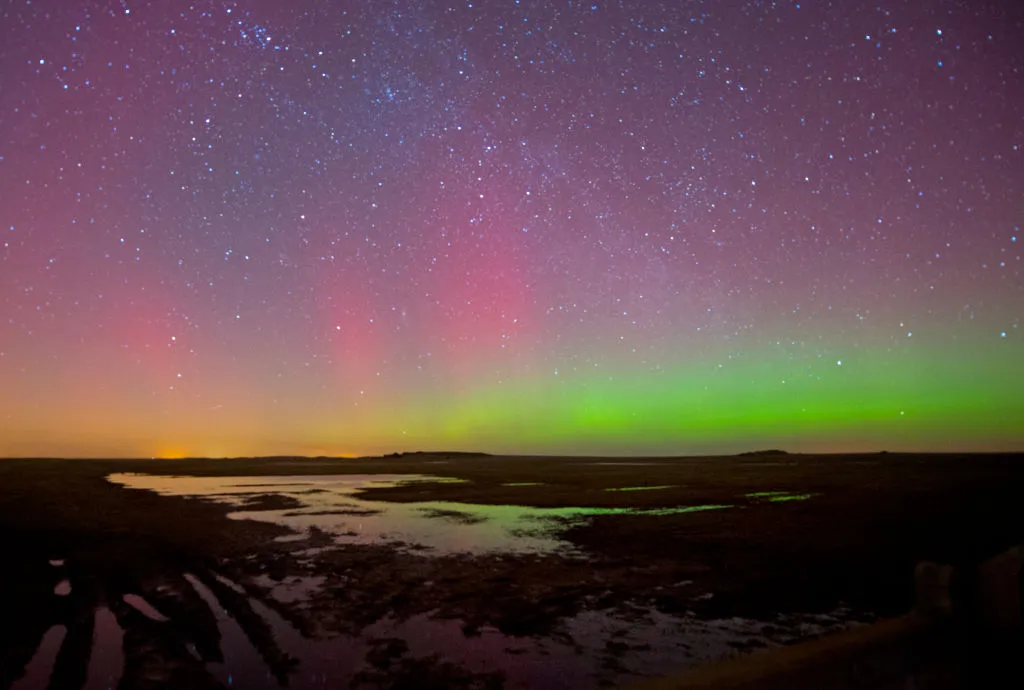The 2021/22 aurora season has proved a good one so far, particularly for aurora-watchers in the UK, with numerous newspaper reports of Northern Lights seen in the UK since September 2021.
This is likely due to an uptick in solar activity as part of the solar cycle, but before we go into that, let’s think about what causes the aurora in general.

The aurora is an incredible light show caused by charged particles accelerated into our upper atmosphere. This acceleration process is driven by the Sun, so the changing power – or activity – of the Sun affects the aurora we see.
When we are young we often think of the Sun as a uniform yellow ball in the sky, but look closely at NASA pictures and you’ll see that the Sun’s surface is anything but uniform.

The Sun is made of plasma, an electrically charged gas of mostly hydrogen and helium.
The surface is a bit like a boiling pan of water, with hot material welling up and cooler material dropping down.
This motion is stirred up because the Sun also rotates at different speeds at its poles and equator, making for turbulent flows.
Magnetic fields are generated, twisted into loops emerging from the surface by this rotation.

Some of the Sun’s plasma is also released into space, the Sun’s atmosphere expanding out in all directions.
This is called the solar wind, and it is this that drives the aurora on Earth.
In addition to the ordinary outflow of particles, the Sun also throws off extra particles when twisted magnetic loops break and fling out solar matter.
All the charged particles flowing towards us in the solar wind would be dangerous for life on Earth if we didn’t have protection from our magnetic field.
The electrically charged solar wind plasma has an embedded magnetic field, and magnetic fields can’t cross each other, so when the solar wind hits Earth’s magnetic field it is deflected around us.
As it does so, it interacts with our magnetic field, transferring energy and accelerating charged particles into Earth’s atmosphere to cause the aurora.
Increased auroral displays in the UK

So, why do we sometimes see more aurora displays in the UK than at other times?
The aurora happens in rings around Earth’s poles, most often seen between about 65° and 75° latitude.
This is the region where aurorae will be generated by just everyday solar wind.
But sometimes solar wind conditions are stronger, faster and denser, and this can cause bigger aurora displays that expand the auroral oval to lower latitudes, where they may be seen in the UK or even further south.
Solar physicists or space weather forecasters will talk about the ‘activity’ of the Sun.
This can be measured by things like sunspots on its surface – the more sunspots, the more twisted the magnetic field.
It is these dark, active regions where the twisted field lines can break and throw extra matter out into the solar wind; really big examples are called coronal mass ejections (CMEs).

These events are the ones that cause the biggest ‘solar storms’ and the brightest aurora. Light from these stretches up by hundreds of metres in Earth’s atmosphere.
The Sun’s activity waxes and wanes over an 11-year cycle.
‘Solar maximum’ is when the number of sunspots visible on the disc of the Sun is at its peak; it is when the solar magnetic field is most disrupted and there’s an increased likelihood of solar flares and coronal mass ejections.
At solar maximum, the polarity of the Sun’s magnetic field flips completely and then gradually relaxes back to a minimum, undisrupted state before twisting itself up all over again.
The last solar minimum ended in October 2020 so solar activity is now ramping up – we are now in Solar Cycle 25 – with the next peak predicted to be around mid-2025.
That means we should see an increase in the frequency of space weather storms, and therefore UK aurora displays, over the coming years.
How to see the Northern Lights in the UK

To see the Northern Lights anywhere you need a spot looking north with a clear horizon, where there is minimal light pollution.
In more populated latitudes, a good location is somewhere like a northern coastline, looking out across the sea (for advice on this, read our guide to stargazing on the coast).
In general, the best places in the UK to see the aurora are the places furthest north.
So, of course, Scotland is ideal, and there are some beautiful photographs of displays taken from Caithness, the Moray coast, Aberdeenshire, Shetland and the Western Isles.

However, for more active aurora displays where the auroral oval spreads further south, many people have luck seeing the aurora in coastal areas of Northern England such as Bamburgh or Whitley Bay in Northumberland (both known for their dark skies); north Norfolk; Northern Ireland; and even Pembrokeshire in Wales, which is barely further north than Oxford.
In the UK, light pollution and clouds have the biggest impact on the visibility of mid-latitude auroral displays.
This article originally appeared in the March 2022 issue of BBC Sky at Night Magazine.
